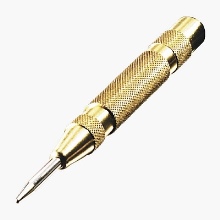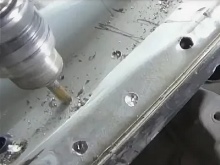Spot Welding Drill Bits

In modern industry and in the automotive industry, widespread use is given to the method of joining parts by means of spot welding. As a result of such welding, the joint is strong and durable, while the welding process itself is performed quite quickly, which indicates the high productivity of the technique. Situations often arise when a part welded by means of spot welding needs to be disconnected, for example, when performing a car body repair. Most often, this issue is solved by using a hydraulic punch, but its use is not always possible. In this case, the welding sections are drilled with a special drill.... For work, it is necessary to install the drilling tool in an electric drill and drill at slow high-speed revolutions - in a few minutes after performing such a manipulation, the parts welded by the spot technique can be disconnected from each other.

Peculiarities
The spot weld drill is used to remove a permanent weld joint. Such a cutter allows you to perform accurate reaming of the welding point, without causing significant damage to the surface of the part by such actions. Often, a tool with a diameter of 8 mm is used for drilling. You can find such a drilling tool in specialized retail outlets, but its cost can be quite high. However, the purchased drill will pay off your costs, greatly facilitating the procedure for removing parts connected by spot welding.
In addition, the robust steel cutter can be sharpened - the tool can withstand several sharpening cycles and retain its original properties.



The main advantages of a cutter for removing spot weld fixtures.
- It is possible to carry out welding drilling work without first forming a depression in the welding point, that is, without punching. This feature of the drill is convenient, as it saves a lot of time and effort.
- You can work with a drill for a long time, carrying out sequential drilling of several welding points in a row at once. Even when heated, the drill does not lose its properties.
- The service life of the tool is quite long, since this product is made from high-strength steel grades and has the ability to multiple sharpening cycles.
- After reaming the weld points, the dismantled part remains saved for reuse. In addition, the surface of the second workpiece, to which the dismantled part was attached, is not damaged, and it can again be used for its intended purpose.


The tool designed for dismantling welding points is made made of alloy steel with the addition of titanium sputtering... Produced 2 types of such a tool: with one working side or double-sided... Drill diameters are different - they can be 6, 8 and 10 mm. The choice of the drill diameter depends on the size of the weld point to be drilled. In this case, an additional 1.5 mm is added to the diameter of the drilling object.
By its structure, the drilling tool has 3 main parts.
- Core area. The height of this part must be selected in such a way that it exceeds the thickness of the part by 2 mm.
- Cutting part. To strengthen this area, titanium spraying is applied to the metal, which significantly strengthens the drill, extends its wear resistance and allows the tool to work regardless of its heating.
- Mounting area... This part is for attaching the drilling tool to the electric drill holder.
By visual signs, it is quite simple to distinguish a tool designed for dismantling welding points from other drilling counterparts - the axis of the tool is tapered, with an angle of 90 °, while the working end of the drill is flat.



How to work?
At first glance, the simple technology of using a tool designed for dismantling welding points has several features. Experts adhere to the following rules in their work.
- An electric drill is used for work, which has the ability to adjust the speed of rotation.
- Drilling work must not be carried out at high speed, since the tool pin may be broken due to the heavy load.
- To carry out the drilling process, the drill is set to the drilling point in a strictly perpendicular position. Any deviations during work are unacceptable, as this can damage the surface of the drilled part.


Before starting drilling work, the work surface must be prepared. They do it as follows.
- The surface is cleaned of dirt and a layer of paint - this will significantly improve the quality of the work result and reduce the likelihood that the tool will come off during drilling. Cleaning is done with sandpaper.
- Although the drill can be used without first punching the drilling area, for convenience, this procedure is sometimes performed using a separate core for this purpose.



Before starting work, you must inspect all welding points and determine which tool diameter you need to use for drilling.
Although the most common tool diameter is 8mm, other diameters may be required.

When the preparatory work is completed, you can start drilling... To do this, the drilling tool is placed in the chuck of an electric drill and, after pointing the working part of the tool to the welding point, pressing the drill tightly, they begin to drill, starting at low speeds. During the drilling process, it is important to take your time and make sure that you do not drill through the metal part. After the end of the process of drilling the points of the welded attachment, the next step will be to separate one part from another.
It should be borne in mind that the cutter does not completely drill through the weld point, as a conventional drill does, its principle of operation is different - it drills in a circle in the area of the weld point and allows you to separate the part from the base. After the parts are separated, the remaining metal from the welding is cut off with a grinder or a cut-off grinding disc, and in some - especially difficult - cases, a chisel with a hammer is used to separate the parts.



If it is necessary to drill the front part of the welding fixture, use a drill, which has a peculiar cone-shaped projection in the form of a spout, with which the centering of the drill is held in the desired position. In this case, the sharpening of the drill itself is flat.
Another effective way to dismantle welding points is considered using a small crown with sharpened teeth. This device has in its design a spring-loaded centering stop that acts as a limiter. It can be adjusted with a special setting... During operation, the crown removes only the area of the weld point, while not affecting excess parts of the metal of the part.
The crown is used in cases where it is problematic to use a drill due to damage to the dismantled part - in this case, it can be difficult to detect spot welding spots.



How to sharpen?
Like any cutting unit, a tool designed to dismantle weld points requires maintenance. When the cutting surfaces are dull, they are sharpened, if this procedure is performed correctly and accurately, then the tool can be extended its service life, while maintaining all its cutting properties.
The process of sharpening the spot weld removal tool is as follows:
- preliminary cleaning of the tip of the drill with sandpaper is carried out;
- the cutting side surfaces of the tool are ground using an abrasive wheel - this manipulation must be performed very carefully in order to maintain the sharpening angle of the cutting edge of the tool;
- check the quality of sharpening and the evenness of the cutting surfaces of the drill;
- the process of processing all edges of the drill is carried out with constant control during the operation of the centering of the tool in order to avoid regrinding it from one of the sides.
Sharpening the drilling tool must be done carefully... If the angle of sharpening of the cutting part is violated, the drill will become unusable.
If you do not have an independent skill in turning cutting tools, you can take a sharpening drill to a specialized workshop.

You can find out how to sharpen a drill for drilling spot welding with your own hands from the video below.













The comment was sent successfully.